![]()
![]()
![]()
Use LEFT and RIGHT arrow keys to navigate between flashcards;
Use UP and DOWN arrow keys to flip the card;
H to show hint;
A reads text to speech;
82 Cards in this Set
- Front
- Back
|
Cornea |
Rounded, transparent covering over the front of your eye. Curved to focus light waves into narrower beam. |
|
|
Pupil |
Rounded opening at the front of the eye that allows light waves to pass onto the eyes interior. |
|
|
Iris |
Circular muscle that surrounds pupil and controls the amount of light entering into the eye |
|
|
Lens |
Transparent, oval structure whose curved surface bends and focuses light waves into a narrower beam. |
|
|
Retina |
Located at the very back of the eyeball, a think film that contains cells that are extremely sensitive to light (These light sensitive cells are photoreceptors. they begin the process of transduction by absorbing light waves) 3 layers of cells Back layer contains Rods and Cones Change light waves to electrical signals |
|
|
Optic Nerve |
The optic nerve carries impulses through the retina's blind spot (Contains no photoreceptors) toward the brain Impulses flow through the optic nerve as it exits from the back of the eye Cross and pass through the thalamus The thalamus relays impulses to the back of the occipital lobe in the right and left hemisphere. |
|
|
Rods |
A photoreceptor that contains the chemical Rhodopsin. Located in the periphery Activated by small amounts of light Very light sensitive. Allows us to see dim light See only black, white and shades of gray) |
|
|
Cones |
A photoreceptor that contains 3 chemicals called Opsins. Located in the center of the retina (The Fovea) Activated by bright light Allows us to see color Allows us to see fine detail Wired individually to neighboring cells |
|
|
Ganglion Cells |
Middle layer of retina. Generates nerve impulses |
|
|
Nerve Fibers |
nerve fiber is a threadlike extension of a nerve cell and consists of an axon and (in some cases) a myelin sheath. There are nerve fibers in the central nervous system and peripheral nervous system.
|
|
|
Thamalus |
Does some initial processing after the optic nerves cross over and stop there, the thalamus relays the impulses to the back of the occipital lobe in the right and left hemispheres. |
|
|
Primary visual cortex |
Back of the occipital loves is where primary visual cortex transforms nerve impulses into simple visual sensations (Texture, line and color) If part of your primary visual cortex is damaged you would have a blindspot (blindness) |
|
|
Visual association area |
Primary visual cortex sends simple visual sensations to neighboring association areas which add meaning/association. If damaged could cause Visual Agnosia: Difficulty assembling simple visual sensations into more complex meaningful images |
|
|
Pinna |
The outer part of the ear. Oval shaped structure that we see, protrudes from the side of the head It picks up sound waves and sends them down the auditory canal. |
|
|
Auditory canal |
Is a long tube that funnels sound waves down its length so that the waves strike the ear drum (Tympanic membrane) |
|
|
Eardrum |
The middle part of the ear Sound waves strike the ear drum and cause it to vibrate. The eardrum passes the vibrations on to the first of three small bones (Ossicles:Hammer, anvil, stir up) |
|
|
Ossicles (Hammer, anvil, stir up) |
Hammer (Attached to the back of ear drum) When ear drum vibrates, so does the hammer. The hammer sends vibrations to the anvil which sends vibrations to the stirrup The stirrup makes the connection with the end membrane (The oval window) |
|
|
Cochlea |
The inner ear. Involved with hearing Has a boney exterior that looks like a shell Contains receptors for hearing Its function is transaction--transforming vibrations into nerve impulses that are sent to the brain for processing into auditory info. |
|
|
Oval window |
Opening from the middle ear into the inner ear |
|
|
Hair cells |
Bottom layer of cochlea on the basilar membrane The vibrations causes waves in the fluid, bending the hair cells and triggering nerve impulses (Transduction) |
|
|
Basilar membrane |
Cochleas bottom layer where the hair cells are. |
|
|
Auditory nerve |
A band of fibers that carry nerve impulses to the auditory cortex (in the brain) for processing |
|
|
Auditory brain areas |
Sensations and perceptions Two step process Primary auditory cortex-located at the top of temportal lobe, transforms nerve impulses into basic auditory sensations (meaningless sounds) Auditory association area- Receives meaningless auditory sensations in the form of nerve impulses from primary aud. cortex. Turns sensations into perceptions (Meaningful sounds, music, words) |
|
|
Taste |
Chemical(Stimuli for taste) break down into molecules which mix with saliva which stimulate taste buds, producing nerve impulses that reach an area if the brains parietal lobe. Brain transforms impulses into sensations of taste. Receptors called taste buds(Look like onions) -Sweet, Salty,Bitter, Sour, Umami Taste buds perform transduction |
|
|
Smell (Olfaction) |
Olfaction is called a chemical sense because its stimuli are various chemicals that are carried by the air. The upper part of the nose has a small area that contains receptor cells for olfaction. These receptors function creates transduction-transforms chemical reactions into nerve impulses. Stimulus-Snunk spray, brownies, perfumes. |
|
|
Touch |
Includes pressure, temp. and pain. Beneath the outer layer of skin are a half-dozen mini sensors that are receptors for the sense of touch Change mechanical pressure or temp. variations into nerve impulses that are sent to the brain for processing. Receptors:Skin, hair receptors, free nerve endings, pacinian corpuscle Brain areas:Somatosensory cortex (parietal lobe) Transforms nerve impulses into sensations of touch, temp and pain. |
|
|
Visual pathways |
Eye to brain |
|
|
Bottom up & top down processing |
Top Down: Occurs when perception is guided by previous knowledge and experience, beliefs or expectations to recognize the whole pattern (You know that you're looking at your dog because you've seen him countless of times) Bottom up:Occurs when perception begins with bits and pieces of info that, when combined, lead to perception of a whole pattern. reading a sentence uses both processes |
|
|
Organizational rules |
(Identified by gestalt psychologists) Specify how our brains combine and organize individual pieces or elements into a meaningful perception |
|
|
Figure-ground rule |

States that in organizing stimuli,we tend to automatically distinguish between a foggier and a ground, The figure, with more detail, stands out against the background, which has less detail. |
|
|
Similarity |
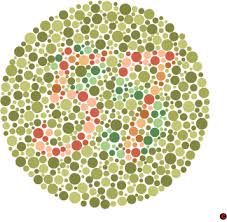
States that in organizing stimuli we group together elements that appear similar. |
|
|
Closure |
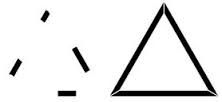
States that in organizing stimuli we tend to fill in any missing parts of a figure and see the figure as complete |
|
|
Proximity |

States that in organizing stumble we group together objects that are physically close to one another |
|
|
Simplicity |

States that stimuli are organized in the simplest ways possible |
|
|
Continuity |
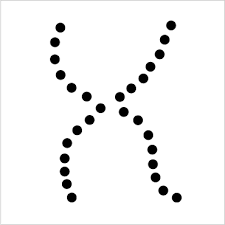
States that in organizing stimuli we tend to favor smooth or continuous paths when interpreting a series of points or lines |
|
|
Constancy |
Perceptual constancy refers to our tendency to percieve sizes, shapes and brightness and colors as remaining the same even though their physical characteristics are constantly changing Size-Tendency to perceive objects the same size even when their images on the retina are continually growing/shrinking. Shape-Tendency to perceive objects as the same shape even when you view it at different angles Brightness-tendency to perceive brightness as remaining the same in changing illumination Color-the tendency to perceive colors as remaining stable despite differences in lighting |
|
|
Depth perception (Binocular cues) |
The ability of your eye and brain to add a third dimension, depth,to all visual perceptions, even though images projected on the retina are in only two demensions (Height and width) Seeing in 3D means seeing in length width and height |
|
|
Convergence |
a binocular cue for depth perception based on signals sent from muscles that turn the eyes. To focus on near or approaching objects, these muscles turn the eyes inward,toward the nose. The brain uses these signals to determine the distance of the object. |
|
|
Retinal Disparity |
Is a binocular depth cue that depends on this distance between the eyes. Because of their different positions, each eye receives a slightly different image The difference between the right and left eyes imagine is retinal disparity. The brain interprets a large retinal disparity to mean a close object and a small retinal disparity to mean a distant object. |
|
|
Monocular Depth Cues |
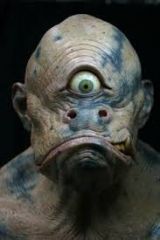
Are produced by signals from a single eye. Monocular cues are most commonly arise fro, the way objects are arranged in the environment |
|
|
Linar perspective |

is a monocular depth cue that results as a parallel lines come together or converge in the distance |
|
|
Relative size |
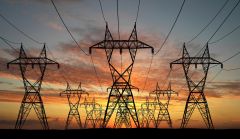
A monocular cue for depth that results when we expect two objects to be the same size and they are not. In that case, the larger of the two objects will appear closer and the smaller will appears farther away |
|
|
Interposition |
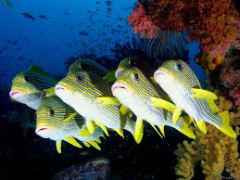
A monocular cue for depth perception that comes into play when objects overlap. The overlapping object appears closer and the object that is overlapped appears farther away |
|
|
Light and Shadow |
Brightly lit objects appear closer while objects in shadow appear farther away |
|
|
Texture and Gradient |
Areas with sharp,detailed texture are interpreted as being closer and those with less sharpness and poorer detail are perceived as distant |
|
|
Atmospheric perspective |
Is created by the presence of dust, smog, clouds, or water vapor. We perceive clearer objects as being closer and lazy objects being farther away. |
|
|
Motion parallax |
Based on the speed of moving objects. We perceive objects that appear to be moving at high speed as closer to us than those moving more slow or appearing stationary. |
|
|
Illusions (Discuss one of the illusions noted in the book/power point) |
An illusion is a perpetual experience in which you perceive in image as being so strangely disoriented that, in reality, it does not exist. Manipulates the perpetual cues One of the illusions in the book- Moon illusion The moon appears to be huge when its near the horizon but smaller when its high in the sky. Even though the size of both moons on your retinas is exactly the same you perceive it as a 50% size increase. Also the things surrounding the moon influences our depth perception. When we see it on the horizon we see it in relation to the landscape (Trees) but when its elevated we have no cues to indicate distance. |
|
|
ESP |
Is a group of psychic experiences that involve perceiving or sending info (Images) outside normal sensory processes or channels |
|
|
Different states of consciousness |
Is different levels of awareness of ones thoughts and feelings. it may create images in ones mind following ones thought processes or having unique emotional experiences. |
|
|
Controlled process |
Activities that require full awareness, alertness, and concentration to reach some goal. The focused attention required in carrying out controlled processes usually interferes with the execution of other ongoing activities (Talking on the phone while driving is a controlled process) |
|
|
Automatic process |
Activities that include little awareness, take minimal attention and do not interfere with other ongoing activities (Eating while watching Tv is an automatic process) |
|
|
Day dreaming |
An activity that requires a low level of awareness, often occurs during an automatic process and involves famtasizing while awake. |
|
|
Altered states of consciesness |
result from using any number of procedures -Meditation -drugs -hypnosis -sleep deprivation to produce an awareness that differs from normal consciensness |
|
|
Sleep |
Consists of 5 different stages that involve different levels or awareness,consiousness, and responsiveness as well as different levels of physiological arousal. The deepest state of sleep borders on unconsciousness. |
|
|
Dreaming |
Is a unique state of consciousness in which we are asleep but experience a variety of astonishing visual, auditory and tactile images often connected in strange ways and often in color. People have blind from birth only have auditory dreams. |
|
|
Unconscious |
(Freuds theory) When we have sexual or aggressive thoughts we place these thoughts under a mental place which we are not aware called the unconscious. We can not voluntarily recall unconscious thoughts or images. |
|
|
Implicit memory |
Means learning without awareness. Such as occurs in emotional situations or in acquiring habits. We are unaware of such learning, which can influence our conscious feelings, thoughts and behaviors (For example you cannot describe the complex motor movements your feet make when they walk down stairs because such motor memories are stored in implicit memory, which you are unaware of and cannot volentarily recall.) |
|
|
Unconsciousness |
Which can result from disease, trauma, a blow to the head or general medical anesthesia, is total lack of sensory awareness and complete loss of responsiveness to ones enviorment |
|
|
Biological clocks |
Are internal timing devices that are genetically set to regulate various physiological responses for different periods of time |
|
|
Circadian rhythm |
Refers to a biological clock that is genetically programmed to regulate phsyological responses within a time period of 24 hours. (Day) |
|
|
Suprachiasmatic nucleus |
One of many groups of cells that makeup the hypothalamus which lies in the lower middle of the brain . The suprachiasmatic nucleus is a sophistocated biological clock that regulates a number of circadian rhythms, including the sleep-wake cycle. Because this nucleus receives direct input from the eyes the suprachiasmatic cells are highly responsive to changes in light. |
|
|
Stages of sleep |
Refer to the distinctive changes in the electrical activity of the brain and accompanying physiological responses of the body that occur as you pass through different phases of sleep. |
|
|
Hypnosis |
A prodecure in which a researcher suggests that a person will experience changes in sensations, perceptions, thoughts and feelings or behaviors. Some people are more susceptible than others |
|
|
Theories of hypnosis |
Altered state theory - Holds that hypnosis puts a person into an altered state pf consciousness, during which the person is disconnected from reality and so is able to experience and respond to various suggestions. Sociocognitive theory-Says that behaviors observed during hyponosis result not from being hypnotised, but rather from having the special ability of responding to imaginative suggestions and social pressures. (They dont need to be hypnotized, can perform actions with suggestion alone) |
|
|
Drugs |
Are chemicals that affect our nervous systems and as a result may alter consciousness and awareness, influence how we sense and perceive things, and modify our moods, feelings, emotions and thoughts. |
|
|
Addiction |
A behavioral pattern of drug abuse that is marked by an overwhelming and compulsive desire to obtain and use the drug: even after stopping, the person has a strong tendency to relapse and begin n using the drug again. |
|
|
Tolerance |
Means that after a person uses a drug repeatedly over a period of time, the original dose of the drug no longer produces the desired effect so that a person must take increasingly larger doses of the same drug to achieve the same behavioral effect. |
|
|
Dependency |
Physiological dependence-change in the nervous system so that person now needs to take the drug to prevent the occurrence of a painful withdrawl or symptom. (They actually need the drug) Psychological dependence-refers to feeling the need to experience the drugs effects in order to achieve psychological or emotional well-being. (The person thinks they need it) |
|
|
Withdrawal symptoms |
Are painful physical and psychological symptoms that occur after a drug dependent person stops using the drug. |
|
|
Stimulants (Types, what they are and what they do) |
All stimulants -cocaine -ampthetamines -caffeine -nicotine increase activity of the central nervous system and result in heightened alertness,arousal, euphoria, and decreased appetite. (Caffeine and nicotine are small stimulants) Nervous system: releases dopamine(neurotransmitter) which causes a pleasureable feeling Dangers: lack of appetite, insomnia, seizures, paranoid feelings, liver damage, memory/weight loss |
|
|
Depressants (Types, what they are and what they do) |
Are a class of drugs that slow the central nervous system (relaxes muscles) lack of self control, memory loss,impaired judgement. -alcohol -Barbituates -Tranquilizers Nervous system: Alcohol stimulates brains GABA which leads to the feelings less anxious and less inhibited.Alcohol impairs the anterior cingulate cortex which monitors the control of motor actions Dangers:Addiction, hangovers, dizziness, headaches, blacking out, liver damage, brain damage. |
|
|
Hallucinogens (Types, what they are and what they do) |
Psychoactive drugs that can produce strange and unusual perceptual, sensory and cognitive experiences which the person sees or hears but knows that a they are not occurring in reality. Such non reality based experiences are called hallucinations. -LDS -MDMA(ecsatcy)-both hallucinogen and stimulant. -PSILOCYBIN (MUSHROOMS) -MESCALINE (PEYOTE) Nervous system:Resembles natually occurring neurotransmitters (Serotonin and dopamine) Dangers: Bad trips, rapid heart beat, jaw clenching, paranoia can cause depression afterwards. |
|
|
(Narcotics )Opiates (Types, what they are and what they do) |
Used to relieve pain and induce sleep Such as -Opium -morphine -herion Nervous system: The brain has naturally occurring receptors for opiates. When morphine reaches the brain receptors it produces feelings of pain reduction, euphoria and constipation. Dangers: After several weeks of regular operate use a persons brain produces less of its own endorphins and relies on the opiate. As a result the person becomes addicted and must administer one or more doses daily to prevent withdrawal symptoms. Nervous system: morphine has found to have the same pain reliving properties as endorphins Dangers: Addictio, withdraw symptoms include sweating, hot and colf flashes, nausea and death. |
|
|
Layers of retina |
Front layer-Nerve fibers that carry impulses to the brain Middle layer-Ganglion cells in which impulses begin Back layer-Rods and cones where transduction occurs |
|
|
Nerve impulses |
When the chemicals broken down in rods and cones is sufficient, it triggers nerve impulses in neighboring ganglion cells, completing transduction. |
|
|
Sleep stage 1 |
Is a transition from wakefulness to sleep and lasts 1-7 minutes. In it you gradually lose responsiveness to stimuli and experiences drifting thoughts and images. Stage 1 is marked by the presence of theta waves which are lower in amplitude and lower in frequency. |
|
|
Sleep Stage 2 |
Marks the beginning of what we know as sleep. EEG tracings how high frequency bursts on brain activity called sleep spindles. Your muscles tension, heart rate, respiration and body temp. gradually decreases and it becomes more difficult for you to become awakened.( The more sleep spindles your brain makes the more likely you will stay asleep when exposed to noise) |
|
|
Sleep stage 3
|
Is when you begin showing some presence of slow brain wave patterns called delta waves. |
|
|
Sleep stage 4 |
When you begin to show an increased presence of delta waves you have entered stage 4. Is characterized by a consistent pattern of delta waves. Stage 4 is often considered the deepest stage of sleep because it is the most difficult from which to be awakened. During stage 4 heart rate, respiration temp and blood flow to the brain are reduced. after stage 4 you will backtrack through stages 3 and 2 and then pass into a new stage called REM sleep (Dreaming) |
|
|
REM sleep |
Makes up the remaining 20% of your sleep time. Means rapid eye movement because your eyes move rapidly back and forth behind closed lids. REM is associated with dreaming |
|
|
Marijuana |
Weed is a depressant and a hallucinogen Has medical benefits(cancer tumors,stokes) Nervous system: The brain has receptors for THC and makes a THC like chemical called anandamide. Dangers: Can cause temporary changes in cognitive functioning such as -short term memory -impares reaction time, vision and judgement -may cause paranoia and feelings of terror -bronchitis and asthsma attacks |

